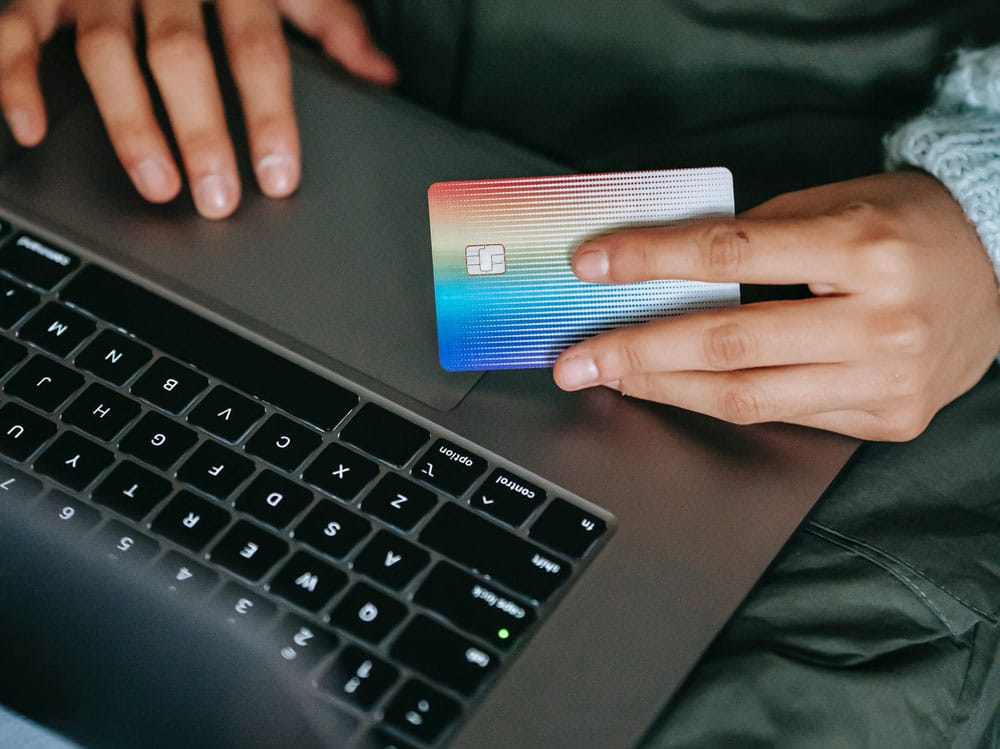**Upselling** and **cross-selling** are two terms that we don’t come across very often in our daily lives. However, those who work in sales certainly have upselling and cross-selling as goals in a negotiation. After all, they are two ways to increase revenue.
In simple language, upselling and cross-selling are ways to increase the value of a sale. These models involve negotiating the same product or service in greater quantity, or offering others that complement the original purchase intention.
In both cases, the goal is not simply to sell more: it is also to improve the consumer’s shopping experience. This can be done from a larger volume of products at a more attractive price, or by adding products that further satisfy any of their needs.
These two techniques are very common in relationships between stores, businesses or companies and their end consumers – and we will show some examples throughout this article. But they are extremely important in the business-to-business environment, known as B2B. After all, they help retain a customer while enabling larger business volumes.
In this text we will present these two forms of negotiation and list some simple strategies to think about when applying them. And, at the end of it, contact Protagnst and find out how our consultants can help your company expand its corporate business with upselling and cross-selling.
Mapa do Conteúdo:
ToggleSummary
-
- What is upselling?
- What is cross-selling?
- Advantages
- Disadvantages
- How to upsell and cross-sell?
- Train your team well
- Know your customer
- Map your products and cross-reference them with needs
- Highlight the needs
- Solve the customer’s problem
- Offer simple upselling and cross-selling solutions
- Automate, but with efficiency
- Don’t insist
- Be honest and transparent
- Reward loyalty. Offer solutions for active customers
- Offer kits or complete solutions
- Use your email or prospect list
- Use testimonials to drive sales
- Offer a cross-sell with scarcity. Limit your offer
- Offer solutions naturally, without forcing the issue
- Test and measure results
- Map the buyer’s journey
- Ask the right questions
- Share cases to encourage upselling and cross-selling
- Offer a trial
- Offer discounts or incentive programs
- Offer incentives for salespeople and have clear goals
- Identify opportunities to sell partner solutions to your customer base
- How to apply upselling and cross-selling in B2B businesses
- What is downselling and when to use it
- Upselling vs order bump
- When not to cross-sell or upsell
- Final Considerations
- Hire a B2B sales consultancy
What is upselling?
There is no exact translation of this term into English, but upselling is a strategy that seeks to expand an initial sale, making it more interesting.
After all, what is the meaning of upselling? What would the literal translation be? Would it be an upgrade, an increase in the sales package? Offer something more advantageous for the customer, but, at the same time, it is also more advantageous for the seller, since it probably has a bigger ticket.
The idea is basically to take advantage of a customer’s desire to purchase to make the product or service more advantageous for them, offering something more complete. This also increases the value of the sale.
The benefit here is mutual. When upselling is done, both the buyer and the seller benefit.
This strategy is very common in the day-to-day business between companies and end consumers, and some of the most classic examples are in the food sector.
Imagine that you go to the supermarket to buy a bag of rice, a dozen eggs and a liter of soda. The prices are displayed on the gondola: the one-kilo bag of rice costs $5, which is the same price as a dozen eggs. The liter of soda costs $4. So, to buy all three items, you will pay $14.
But, looking closely, you realize that larger packages have prices that, proportionally, are more attractive. Instead of spending $5 on a kilo of rice, you can take the five-kilo bag for $20. The 30-egg pack, in turn, costs $10. And the two-liter bottle of soda is selling for $6.
Adding it all up, you would spend a little more than double your initial purchase, but you would take five times more rice, two and a half times more eggs, and twice as much soda. Thus, the purchase became more interesting for you – and also for the supermarket, which had a higher average ticket.

Back to top
What is cross-selling?
Cross-selling is another sales strategy that benefits both ends of the business. This is a cross-trade. The idea here is to expand the sale by offering products that complement each other. If purchased at the same time, they will cost less than if purchased separately – or, they will make the consumer experience more complete.
What would be the translation of the term cross-selling? What would be the real meaning of this sales term? To offer another complementary product along with the product that the customer would already like to purchase. It is the cross-selling of two products or services that complement each other.
Think, for example, of a fast food chain that offers a hamburger for $20. The store’s price list also displays the fries for $10 and a glass of soda for $8. If purchased separately, these products would represent an expense of $38.
As a way to entice the customer to take more than just the hamburger – which was their initial desire – and two of the most traditional side dishes, the fast food chain offers the “combo” option, where the package with the three products costs $30.
Notice that the customer saved money if we consider the individual values of the products, while the network earned more than it would have earned when that customer expressed their first purchase interest.
Other times, the benefit is not in the lower price, but in the final consumer experience.
Imagine, for example, that he went to an electronics store to buy a new computer to play online games. This clearly demonstrates that he is willing to invest in his entertainment.
So how about offering him a gamer chair as well, which will allow him to play longer and more comfortably? That’s cross-selling.
Want to increase your sales? How about hiring a consultancy that knows their stuff? Protagnst is a specialist in prospecting for B2B leads and customers. Fill out our form and get in touch!
Back to top
Advantages
There are many reasons to use these techniques, but the main ones are:
- Increased revenue
- Increased average ticket
- Increased customer satisfaction and loyalty
- Portfolio diversification and strategy to gain market share by offering something simpler
- Increased ROI per customer
- Increased customer LTV (Lifetime Value)
- Improved customer relationship
- Increased long-term added value
- Lower price for the customer
- Offers convenience and flexibility
- Reduces dependence on new customers
- Reduces the cost of customer acquisition, since they are already customers
- Promotes innovation
- Discourages churn and increases customer loyalty and experience
Back to top
Disadvantages
As not everything is rosy, there are some disadvantages to upselling or cross-selling, depending on how you do it.
-
- Promotions and cross-selling and upselling actions need to be thought out and planned so as not to generate losses
- The process can be extremely manual, depending on the type of service/solution you are working with
- The process takes a long time to reach maturity
- If you offer the wrong thing, you risk losing the sale you already had
- You may discover other problems in the operation, as you will receive feedback from the customer
Back to top
How to upsell and cross-sell?
In the business environment, transactions often occur purely by chance. But even in these cases, the chance of them proceeding gradually and safely involves following a few steps.
But you must be wondering how to cross-sell and upsell efficiently, right?
There is no rule, but having well-defined methods and trying to act strategically makes things much easier. This includes knowing who you are dealing with and knowing the right time and way to approach them.
In addition, structuring a sales model opens up the possibility of replicating it on a larger scale. This is especially interesting for those who manage a team or work with a sales consultancy.
Here are eight practices to consider when upselling or cross-selling is the goal. These are simple suggestions to be careful, but without any beating around the bush.
1. Train your team well
In the business world, being aware of opportunities is essential. And they often come up in the middle of a conversation or in a negotiation that has just begun.
Therefore, having a well-trained sales team can make all the difference. Cross-selling and upselling is, at heart, an exercise in recognizing perfect timing.
More important than trying to force a sale is making a truly consultative sale, that is, a sale that adds value and really makes sense to your lead.
In all our articles, we emphasize the importance of listening carefully to our client – or potential client– to understand their needs and offer a solution that best fits them.
Whenever you can do that, the business is on track for a happy ending. And the same goes for upgrading that business. If your customer is satisfied with what your company will deliver, show them that this shopping experience can be even better if they add another product or service, or if they purchase it in larger quantities.
Well-trained teams know how to recognize the right time to offer a business upgrade.
2. Know your customer
This is in the wake of the first tip and is also one of the most important for the success of any negotiation. Knowing the customer well is essential to be able to offer them the right products and services.
Let’s do an exercise: imagine you go to a clothing store willing to buy a new jacket. There are countless models and many have nothing to do with your style. Then the salesperson asks you how you like to dress and, based on your answers, presents you with three or four models. You like all the jackets.
This experience will likely make you trust the salesperson’s suggestions. It’s even possible that the next time you walk into the store, you’ll ask to speak directly to them. Or, you may provide your cell phone number or email address so they can contact you when a new model arrives.
This relationship of trust is beneficial for both sides. The customer, for example, saves time and streamlines their purchasing process because the salesperson knows what they need. For the seller, it’s an opportunity to offer products that complement the buyer’s need.
By knowing your customer well, you are more likely to offer a truly appropriate upsell or cross-sell. It will be easier to identify needs that really make sense for that qualified lead.
3. Map your products and cross-reference them with needs
You certainly know everything your company produces and has to offer. And your products or services probably complement each other – or at least serve similar areas.
For this same reason, when a customer comes to you looking for something specific, they may be interested in other things you offer. Sometimes, however, they don’t even know.
So, knowing a customer’s purchase history and being aware of everything they are looking for is a good way to upsell and cross-sell. If they don’t expand their purchase at that time, you can offer new opportunities the next time they come to you – or better yet, you can approach them shortly thereafter with personalized offers.
Knowing the customer or potential customer allows you to send offers by phone, email or other forms of contact more assertively. And this is sure to represent an increase in your sales. To learn more about your persona or target audience, see this article.

4. Highlight the needs
Any attempt to upgrade sales involves showing the customer that what you have to offer solves their problems.
Imagine a transaction between two companies. You have done all the pre-sale process correctly, researching the market, identifying the ideal customer profile and perceiving a business opportunity. Finally, you have prospected a new customer.
Your company, for example, came to them offering new inventory management software. You show that your product is able to anticipate when levels will be on alert, when production will need to speed up or slow down. This was exactly what the potential customer was looking for.
But don’t stop there. Show them that your company can offer even better solutions. What if, for example, in addition to inventory management software, they also purchased your logistics monitoring program? After all, the two interact and both need the company’s attention. In other words, they have needs and you have the solutions.
5. Solve the customer’s problem
This way of upselling and cross-selling ties in closely with the previous one.
Offering a product or service in greater quantity, or adding something beyond what was sought, should never be something simply with the intention of charging more. It needs to be substantiated.
Imagine, for example, convincing the customer that taking ten times more than they wanted is advantageous. The upsell happened, but in the end, it brought a new problem to the buyer: they were left with too much product in stock, or they couldn’t resell it. In short, the apparent advantage turned into a loss. They are unlikely to do business with you again.
Now, things can be different if the tenfold purchase volume is negotiated. You can show them that buying in that quantity will mean lower costs and guaranteed delivery, but not necessarily all at once. You can arrange for periodic deliveries, as needed. This way, their problem will be solved and the upsell will be guaranteed.
6. Offer simple upselling and cross-selling solutions
A good way to upsell and cross-sell effectively is to offer the customer simple solutions.
Remember the hamburger example at the fast food restaurant? The tactic of offering a package that includes fries and soda for an inviting price usually works because the store put things that really complement each other in the same combo. It certainly wouldn’t be as successful if, instead of fries, the package included a bowl of soup.
In other words, offer the customer a purchase upgrade with things that will really benefit them. Forcing the sale of products or services that will not meet a need of the buyer will only generate dissatisfaction, and this is terrible for those seeking a lasting business relationship.
At the same time, when offering something that seems like a good deal right off the bat, the chances of a positive outcome are much higher.
Back to top
7. Automate, but intelligently
This one is important for companies that do business online, such as e-commerce.
Look at the websites of major retailers. It’s common, when you select a product, to see a suggestion next to the checkout button for another complementary one (cross-sell). Sometimes this comes with the information that “people who chose this were also interested in that.”
This is a simple way to sell more, and with good returns.
In these cases, cross-selling suggestions occur between products or services that make sense to each other. In other words, the suggestion automation has been done intelligently.
So, if you have an online business, automate your cross-selling options in a consistent way. And this is relatively simple: associate products from the same areas. For example, if someone is looking for a mattress, suggest buying pillows together.
Remember: always try to increase sales with products that solve a customer need and connect with the initial purchase.

8. Don’t insist
Have you ever had the experience of going shopping and having to insist on “no” to a salesperson who wouldn’t stop offering another product? Surely the experience was bad.
Being persistent and persuasive is important in sales. You shouldn’t give up on a sale easily, but you need to know the difference between persistence and insistence. A customer is not always willing to expand their purchase, and often they are not even in a position to do so.
On the other hand, accepting that the upsell or cross-sell will not happen at this time does not mean that it will not be done again. It is possible to establish a relationship with the customer and try a future upgrade in the sale.
Want to know how Protagnst can help your company get more customers? Fill out this form.
9. Be Honest and Transparent
Actually assess what your customers need. Always think about their needs, and only offer an upsell or cross-sell that makes sense for their reality. The more open, honest and transparent your sales and post-sales team is during the buying process, the more likely those customers are to stick around and become loyal advocates for your brand in the future.
Be transparent and honest with customers when trying to upsell or cross-sell. Transparency about pricing, contracts, payment methods will greatly improve your relationship with the lead and future customer. The more honest you are and check what they really need, only offering something of value, the more likely they are to buy your upsell or cross-sell (cross-selling) offer.
10. Reward Loyalty. Offer solutions for active customers.
Perhaps the best strategy for cross-selling and upselling is to study your current customer base. Understand who they are, what they have purchased and call them for a conversation. The purpose of this conversation is to understand if they have other pain points that you are also able to solve.
Reward their loyalty by offering better packages for their needs. As they are already customers, it is much easier to offer new services or products, since they are already customers. As you have more openness, it is easier to identify their needs as well.
11. Offer kits or complete solutions
Often your customer started by hiring you to solve a specific problem. In our case, it is very common for clients to hire inside sales consulting to focus primarily on customer prospecting. After starting the work and solving the lack of lead generation, we can offer a job to offer a sales playbook or the design of the marketing strategy, for example.
Offering complete packages or kits makes negotiating much easier too, as customers can purchase more services at a more competitive price.

12. Use your email or prospect list
Many companies that work with inbound marketing have large lists of potential customers, what we call email lists. Instead of wanting to revolutionize the world and go after new customers to offer upsells or cross-sells, many times you can use your own list of emails or prospects.
13. Use testimonials to drive sales
Testimonials are unique ways to demonstrate social proof that what you offer actually works. When your customer or potential customer sees a testimonial from another customer of yours, you are much more likely to reinforce the excellence achieved and the results achieved.
This can be a great way to upsell, as the lead comes to want the same solution that your customer had after hiring your company. Use testimonials and make word-of-mouth marketing take on another dimension. It’s not your company talking, but your customers talking.
Back to top
14. Offer a cross-sell with scarcity. Limit your offer.
One way to offer a cross-sell is to limit the offer. In other words, you only have a limited number of sales that you will make that month or from that offer. This is important when offering complementary packages, as it creates a feeling of scarcity.
The Lead will want that offer before it runs out. This serves for products, for services, and serves to demonstrate to the lead that only during this offer, this type of service or solution will be performed in this way.
If you want to know more about the scarcity trigger, visit this article on our blog.

15. Offer solutions naturally, without forcing the issue
When offering upsells or cross-sells, your approach needs to be natural and consultative. There’s no point in wanting to push what your customer doesn’t need, just to increase your sales. This is shooting yourself in the foot, as it can increase your sales in the short term and decrease your reach in the long term.
By identifying what the customer needs and being consultative, you will only use upselling or cross-selling when necessary, without forcing the issue. This will generate more trust with your customer and will make them grateful for the solution you have provided.
16. Test and measure results
In marketing and sales, everything is a test. If you can measure it, test it. Take an X number of customers and make an upsell offer for the full service. When calling another group, offer a cross-sell to offer more than one service within the same customer group. Measure how many want to hear the offer and measure how many close business with you.
At the end of the day, it’s all measurable and the bottom line is what matters. Encourage what’s working and eliminate what’s not.
17. Map the Buyer’s Journey
Regardless of whether you work with B2C or B2B, whether you use inbound or outbound marketing techniques, it is important that you map your potential customer’s buying journey. This means that you need to know what the stages of your sales funnel are, and which of them depend on you and which do not.
By designing this process, identifying the decision-makers and influencers in the decision-making process, you will see that the buying journey can give you clarity as to when is the best time to present an upsell or cross-sell offer.
In many cases, this process will take place after the product is delivered and while it is still active. You need to map out the buying and usage process for your products or services to know when is the best time to make upselling or cross-selling offers.

18. Ask the right questions
I once heard that wisdom was not in the answers, but in the questions people ask. If you know what to ask, how to ask, and when to ask, you will know how to identify what your client needs, be consultative, and offer exactly the upsell that will make you increase your average ticket and your client solve the problem they have.
Ask the right questions and you’ll know what and when to offer other solutions to your customers.
19. Share cases to promote upselling and cross-selling
Another way to generate authority and make you more familiar with your work is by collecting cases. Cases are case studies, which you can present, from existing clients. These cases can present indicators, before and after results, and serve to encourage the hiring of certain services.
When shared strategically, they can generate upselling or cross-selling, in a very strategic way.
Back to top
20. Offer a trial
A cool way to upsell is to give your customer the opportunity to try a solution for free for a period of time. From the moment they get results and see that things really work, they may want to continue with the service, and then continue to hire your company.
Think of the trial or this free trial period as your customer’s way of trying out your solution, and if it makes sense, sticking with it.

21. Offer discounts or incentive programs
Want to reward your loyal customer base? Offer discounts or incentive programs to drive sales in your business. By creating reward programs, the customer feels happy to know that you care about them and they end up having the possibility to hire more services at a more affordable value.
It is much cheaper to increase your revenue with the same customer base than to win new customers every day. Incentive programs build loyalty and reward your customer, while ensuring recurring revenue for longer.
Having trouble implementing good cross-selling and upselling strategies? We have the solution.
22. Offer incentives for salespeople and have clear goals
The upselling and cross-selling strategy needs to be aligned with the sales goals of the salespeople. There’s no point in you wanting to do this if it’s not a priority for your sales force.
Offer incentives for your salespeople, closers, or farmers, and make sure they are truly rewarded for those additional sales.
23. Identify opportunities to sell partner solutions to your customer base
Finally, if you’re in B2B sales, you probably have companies that have solutions that might be a good fit for your customers. One way to encourage upsells and cross-sells would be to understand, within your partners, who has a more appropriate solution to solve that problem or pain point that your customer is experiencing.
Many times your company will not solve the problem, and that’s okay. However, knowing who can solve it can make the customer even more grateful. By organizing a structured partner program, you get rewarded for those referrals and drive partner sales.
Back to top
How to apply upselling and cross-selling in B2B businesses
In the Business to Business (B2B) business environment, upselling and cross-selling are two great ways to earn more revenue from companies that are already your customers.
As we know, B2B customer prospecting is a task that requires a lot of effort and knowledge. It requires market research, understanding of the area of operation, extensive knowledge of the company with which you want to close a deal, among others.
Prospecting for new customers should always be the goal of any company, but having a captive customer base is very important to ensure financial health. In addition, it is easier to expand business with a customer who already knows you than to look for new ones – especially in an environment that moves large sums of money and large volumes of products.
Thus, doing B2B upselling and cross-selling is one of the best ways to increase revenue.
But the question that remains is: how to apply these techniques in the B2B market, in complex sales, where everything seems to be more manual and more difficult.
Another very common question that may arise is: when to apply cross-selling or upselling in the B2B market?
In digital sales over the internet, without human interaction, there are tools. But how do you do that in a complex negotiation that lasted ten months?
You can use this at the closing of the sale. When you present the proposal, have a negotiated contract, show that for a very small amount, they can have many more advantages.
But the most common time to offer an upsell or cross-sell is when the customer is already a customer. And you have contact with them, especially in the provision of services.
At this point, you can identify that a client has one of your solutions, but has another problem that you can help with as well.
In the case of Protagnst, we were providing the pre-sales outsourcing service and the client noticed that their closer (sales consultant) was not performing well. He came to us, but we could have offered a cross-sell right there, the outsourcing of the entire sales team.
That way, the client would be more satisfied with the result and could dedicate themselves to other strategic issues.
Assess the timing
In general, offering shopping upgrades to corporate customers is very similar to the way one should try to act when the relationship is between a company and an end consumer (B2C). However, as the volume is much larger, it is necessary to be aware of some peculiarities when upselling and cross-selling to other companies.
One of the most important is understanding the client’s timing. In addition to knowing the financial situation and growth plans of these companies at the time of prospecting, it is necessary to carry out continuous mapping. This will help you define the best time to offer new products or expand the offer of those you already negotiate.
After all, you could be taking an unnecessary risk by making a new sale if the company you are negotiating with is not in a position to honor all the commitments made.
On the other hand, corporate clients who have expansion plans are great opportunities to offer new sales. This is because, in order to grow, they need to expand their supplier base, and dealing with those they already know gives them security.
Moreover, when the negotiation is between companies that already have a relationship, especially a long-standing one, there is more room for commercial agreements with some type of benefit.
Focus on the difference, not the bottom line
Between the two models, upselling is the easiest to succeed with in the B2B environment. This is because it involves a product or service that the customer already fully understands, and so they feel more secure in expanding their investment.
When negotiating a larger sale, show your client the advantages of buying in bulk. Make it clear the price difference they will pay per unit. This puts the final purchase amount into perspective.
Back to top
What is downselling and when to use it?
Now that we’ve covered upselling and cross-selling quite well, we’ve missed one topic: downselling. As the name implies, in a literal translation, it would be you selling something smaller that the customer wants or would like to buy.
As you must be familiar, we work a lot with consultative selling and opportunity identification. When the customer has little capital to invest, it is often much more worthwhile to offer a downselling strategy, but one that will also help solve their problem.
Downselling also serves in those moments when your client wants to buy something more expensive, but you identify that what they need is something cheaper, simpler, and you convince them to spend less with you, because you are being consultative. Being honest and upfront with the client about what they really need can make the difference in them recommending you naturally and always seeking you out when they have a problem related to what you offer.
The long-term relationship ends up being much better.
Finally, you should downsell when the customer really doesn’t have the money to buy the complete solution, but you have an alternative solution that can help them solve their problem. It’s better to sell something of lesser value than to sell nothing. This is especially true when the objection identified is “I don’t have enough resources or money.”

Back to top
Upselling and order bumps: differences and concepts
Have you ever heard of an order bump? What is the difference between this sales technique and upselling? They seem to have the same goal, but the difference is that the order bump is offered before the sale is closed.
Especially in digital sales, where the customer is deciding whether or not to hire a particular information product, they will be able to choose from several options. The order bump always appears at a time of impulse buying, with an even better offer than the one offered on the landing page.
In traditional markets, the salesperson can adjust their pitch to try to sell something or offer something of greater value, before saying what the customer’s solution is.
They might say something like, “Look, I know that contracting the complementary product isn’t your priority, but if you do, you can get a package that is much more advantageous, in addition to these other bonuses that I can offer at no additional cost in the process.
Back to top
When not to cross-sell or upsell
Not all customers should be presented with additional purchase opportunities. Don’t offer more services or products to customers who are not profitable. Teach your salespeople to identify when a customer is likely to be unprofitable and to avoid offering them opportunities to lose even more money.
Examples of unprofitable customers include those who abuse the customer service department, who initiate excessive returns, or who consistently require attention that is beyond the scope of their level of service.
Back to top
Final Considerations
The sustainable growth of any company depends on taking safe steps in line with market trends.
Increasing sales, deep down, is in everyone’s interest. After all, whenever someone sells, it shows that there is an interested consumer market.
But businesses are only viable in the medium and long term if they are beneficial to all parties involved, especially when they develop in Business to Business environments.
Therefore, in all our articles, we insist on working well on the relationship between company and consumer. This ensures that sales are continuous and not just occasional.
In addition, customer loyalty allows you to negotiate more and more with them. This is because the salesperson gets to know their needs better, their investment potential, and knows where they want to go.
All of this makes upselling and cross-selling much easier. Companies that develop a good relationship with their suppliers are more likely to increase the volume of business with them. To this end, the quest must always be for good business practices.
Back to top
Hiring a B2B Sales Consultancy
Are you ready to expand your business? How about improving your sales process and investing in upselling and cross-selling even more efficiently?
Protagnst is a specialist in lead generation, capturing, and expanding business with corporate clients. Fill out the form below and let’s put together the best strategy for your business.






